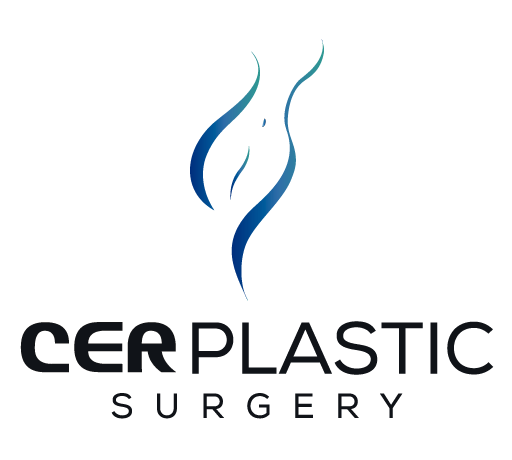In this comprehensive guide, we’ll delve into essential insights on how to effectively manage pain after breast augmentation. Whether you’re contemplating this transformative journey or are already on the road to recovery, this article aims to provide you with valuable information to ensure a smooth and comfortable healing process.
Understanding Postoperative Pain
Breast augmentation is a surgical procedure that involves the placement of implants to enhance the size and shape of the breasts. While the surgical techniques employed have advanced significantly, it’s normal to experience some level of discomfort and pain during the initial stages of recovery. Effective pain management not only contributes to your overall well-being but also ensures a more positive surgical experience.
Managing Pain with Medication
One of the primary methods for pain management after breast augmentation is the use of prescribed medications. Your surgeon will likely provide you with pain relievers to alleviate discomfort. It’s crucial to follow the prescribed dosage and frequency to maintain consistent pain relief while minimizing potential side effects.
However, always consult your surgeon or healthcare provider before taking any medications, as individual responses can vary. Non-prescription pain relievers, such as acetaminophen, may also be recommended, but it’s essential to confirm their suitability with your medical team.
Utilizing Cold Compresses
Cold compresses can be a valuable, non-pharmacological approach to pain management. Applying a cold compress to the treated area can help reduce swelling and numb the sensation of pain. Ensure that the compress is wrapped in a thin cloth to prevent direct contact with the skin, and limit the application to 20-minute intervals.
Maintaining Proper Rest and Positioning
Rest is a critical component of the recovery process after breast augmentation. Adequate sleep and proper positioning can significantly impact your comfort levels. Your surgeon will provide specific guidelines on sleeping positions and the use of support pillows to minimize strain on the surgical site.
How to Choose Your Ideal Surgeon
Choosing the right surgeon for your breast augmentation is a crucial step toward a successful and satisfying outcome. Here are key considerations to guide you in this important decision:
Researching Credentials and Experience
When selecting a surgeon, thoroughly research their credentials and experience in breast augmentation procedures. Ensure they are board-certified and have a proven track record of successful surgeries. Reviewing before-and-after photos of their previous patients can provide valuable insights into their skills and expertise.
Seeking Personal Recommendations
Ask friends, neighbors, and family members about their experiences with plastic surgeons. Personal recommendations can offer authentic insights into the surgeon’s bedside manner, professionalism, and overall surgical experience.
Joining Support Groups
To find a great surgeon, consider joining online or local support groups related to breast augmentation. Members often share their personal experiences, recommendations, and advice, helping you make an informed decision. Engaging with individuals who have undergone similar procedures can be immensely beneficial in navigating your surgeon selection.
Frequently Asked Questions
How to Choose Your Ideal Surgeon
Choosing the ideal surgeon is a critical step in ensuring a successful breast augmentation journey. Start by researching the credentials and experience of potential surgeons, looking for board-certification and a history of successful procedures. Seek personal recommendations from friends and family, and consider joining support groups to gather insights from individuals who have undergone similar surgeries.
Finding a Plastic Surgeon
Finding a plastic surgeon requires thorough research into their qualifications and track record. Look for surgeons who specialize in breast augmentation and are board-certified. Explore before-and-after photos to assess their skill and approach. Personal recommendations and support groups can also be valuable resources in your search.
Ask Friends, Neighbors, and Family About Their Surgeon
Leveraging personal connections is a practical approach to finding a reputable surgeon. Ask friends, neighbors, and family members about their experiences with plastic surgeons. Their firsthand accounts can provide valuable insights into the surgeon’s professionalism, communication style, and the overall satisfaction of their patients.
To Find a Great Surgeon, Find a Support Group
Support groups, whether online or local, can be instrumental in your quest to find a great surgeon. Engaging with individuals who have undergone breast augmentation can offer authentic perspectives on surgeons, share recommendations, and provide guidance based on real experiences. Joining a support group creates a community of support as you navigate the decision-making process.
In conclusion
Managing pain after breast augmentation involves a combination of medication, non-pharmacological approaches, and proper rest. Additionally, choosing the right surgeon is a pivotal decision that significantly influences your overall experience. By conducting thorough research, seeking personal recommendations, and engaging with support groups, you can make informed choices that contribute to a successful and satisfying breast augmentation journey. Remember, your surgeon is a crucial partner in your transformation, and careful selection ensures you’re in capable and caring hands throughout the process.
START A VIRTUAL CONSULTATION
A virtual consultation is when you send us photos of the places of your body where you’d like to improve. Then our surgeon analyzes it to confirm that you are a candidate for that particular procedure. We later inform you about our doctor’s decision and give you a quote with all the information about your surgery. Please, do be at ease that everything is confidential between yourself, the doctor, and the doctor’s representative.




